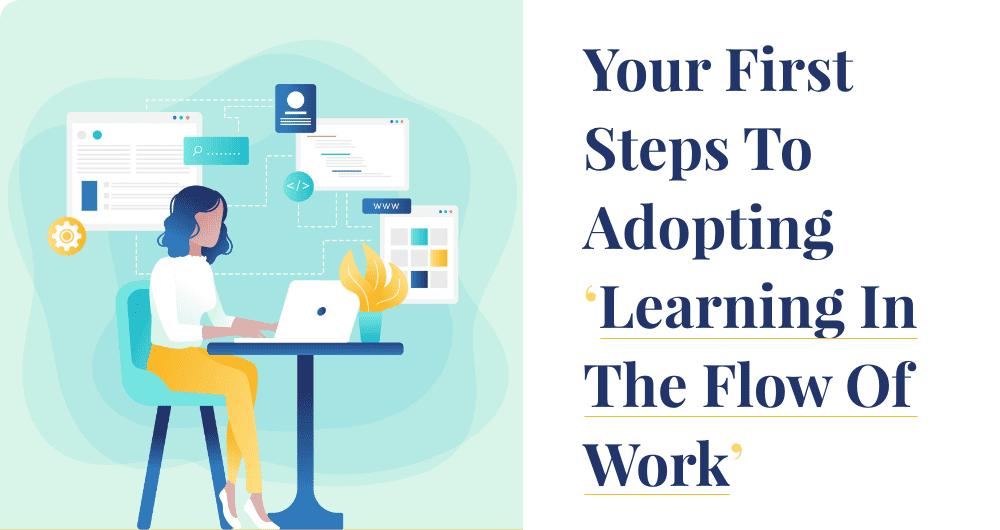
What is Learning in The Flow of Work?
Learning in the flow of work involves quickly and easily accessing an answer to a question – or a piece of learning content– while working. The phrase was coined by Josh Bersin, Global Industry Analyst, and founder of Bersin by Deloitte. This enables employees to reap the actual value of a tool or process without disrupting their workflow and productivity.
Why Learning in The Flow of Work?
For ages, training programs have been conducted in a formal setting, using the traditional methods of classroom sessions and field activities. L&D of companies, organizations and businesses have come to the realization that learners are not learning and there is a lack of genuine interest much due to the formal nature of these sessions. These training programs are not able to achieve the intended learning curve outcomes since employees tend to forget what they learned within days. This also affects their daily productivity as it interrupts their daily work or tasks, overly lengthy training sessions which may not necessarily add value.
The primary aim of training should be about helping employees solve their day-to-day issues and then everything else. This is where learning in the flow of work comes into the picture. It’s about making learning a more relevant, embedded, and effective part of their daily work.
Ideas to Improve Learning in the Flow of Work
Employees will enjoy learning new things if the learning is impactful and curated to an individual’s day-to-day job.
Microlearning Solutions
Introduce microlearning courses which help employees in the hour of need. Microlearning provides employees with a learning experience that is both context-driven and bite-sized. Microlearning leads to more recall and retention since it helps learners to learn in the flow of their day, rather than stop what they are doing to attend an entire training session. Microlearning addresses 1-2 learning outcomes with short, personalised Q&A style learning interventions which could be easily completed within 2 minutes.
Make use of a microlearning platform or an LMS to provide these microlearning courses. Through microlearning platforms embed important skills and knowledge they need to grow in their roles while helping grow the company.
Tools And Technologies
Learning material/content should be easily accessible, this is where tools and technologies come into play. Learning in the flow of work will be a success if the appropriate tools, technologies, and platforms are used to trigger the learning curve. Web and mobile apps should be used for daily learning tasks. Not only does it make learning material easily accessible but also provides an integrated one stop solution from onboarding new hires to product training.
Technologies such as artificial intelligence, fast content indexing technologies, data integration interfaces, and big data consisting of structured and unstructured information can
accommodate intelligent and fast-paced learning. These tools and technologies put employees in charge of their own learning, which they can fit into their schedule.
Curated Content Development
The ideal strategy to support learning in the flow of work is to add value to a learner’s day. Add value by developing engaging and relevant digital learning resources that are aptly curated and to the point. Digital learning content must be carefully sourced, and its quality verified, thus L&D of companies, organizations and businesses should stay clear from YouTube and Google. Organizations should aim for maximum engagement through in-house production, such as off the shelf courses or video-based content keeping employees’ needs in mind. This content can be supplemented with in-person workshops, courses, and discussions.
About 49% of employees’ desire coaching from their managers. Through Manager Labs, managers can share management insights and expertise which would create curated social learning experiences voicing out questions and ideas. These interactions are curated with first-hand experience and expertise which is highly beneficial for employees’ creating a learning buzz at workplace.